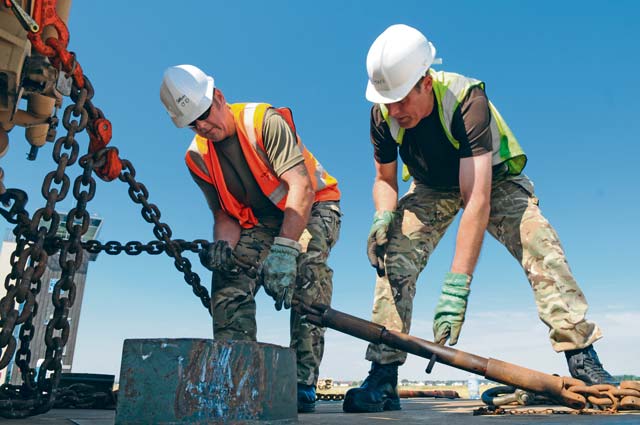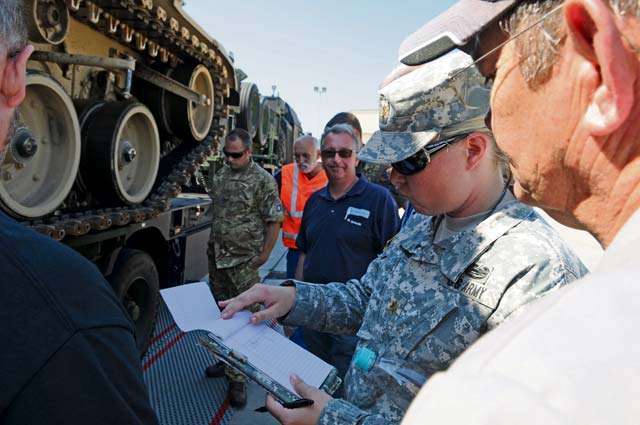
MANNHEIM, Germany — A multinational and multiorganizational team led by the 21st Theater Sustainment Command conducted a critical test of heavy transport trailers from three different nations July 24 at Coleman Barracks in Mannheim. This test verified the feasibility of transporting heavy U.S. tracked vehicles across European highways.
Military tractor trailer combinations from the United States, Germany and the United Kingdom participated in the test, which was conducted by a diverse team of experts from the 21st TSC’s Theater Logistics Support Center-Europe and the 16th Sustainment Brigade, the 405th Army Field Support Brigade, the German army, the armed forces of the U.K., military equipment manufacturers and contractors, and even the German Technical Inspections Organization, known more commonly as the TÜV.
Essentially, the trucks were tested on two important criteria: first, they were tested for their ability to carry the vehicles in accordance with the applicable European Union roadway safety regulations; next, they were tested for interoperability of systems among the different countries.
The various trailers were loaded with a U.S. M1A2 Abrams Main Battle Tank and then an M-88 tracked recovery vehicle; weights and measures were then taken for each axle. These vehicles are two of the heaviest vehicles in service and are needed regularly in theater for training and rotational forces.
The German TÜV verified the weights and measurements and confirmed they were within tolerance of the EU roadway standards. Technicians from the manufacturers of the trucks and trailers were available to provide additional specific technical expertise concerning the capabilities and configuration of each system.
The British army and the German trailer systems met EU standards, but the U.S. trailer exceeded axle weight restrictions with both the M1A2 and the M-88 because the trailer distributes the weight of its cargo across only five axles, while the other two systems employ a seven-axle setup. For this reason, the interoperability test was set up to ensure that U.S. trucks could haul the seven-axle British and German trailers in order to meet EU regulations.
During the interoperability test, they found that the U.S. truck was capable of hauling the German trailer, and the British and German trucks were both able to haul any of the three trailers.
The ability to work seamlessly with regional partners is critical in supporting multinational operations and maintaining rotational forces in Europe, according to Helmut Haufe, director of the TLSC-E, which was an integral leading agency in the test.
“As we work more and more with our NATO partners in the region, interoperability becomes even more important,” Haufe said. “The ability of these transports to work together across national systems is critical for future operations in support of NATO and this test confirms that ability.”



